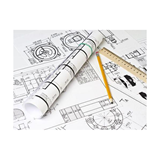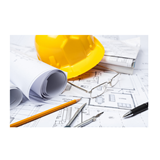Construction Forecasting Council
The figures were released by the Construction Forecasting Council (CFC), an initiative of the Australian Construction Industry Forum (ACIF).
The CFC predicts that growth in spending on engineering construction – primarily roads, railways, bridges, harbours, electricity and water infrastructure, telecommunications and heavy industry - will outpace spending on the residential and non-residential construction sectors for the rest of the decade.
Moving to a longer-term outlook, the CFC predicts growth in spending on engineering construction will reach 11.5 percent p.a. over the next two years, in nominal terms. By comparison, growth in construction spending for the residential sector will be just 1.1 percent p.a., while for the non-residential sector it will be 6.0 percent.
The CFC forecasts engineering construction spending will grow by 6.5 percent p.a. to FY 2011-12, in nominal terms. Non-residential construction spending is predicted to grow at 4.5 percent p.a. over the same period, while residential construction spending will grow at 3.5 percent p.a.
The CFC’s forecasts account for construction spending, in dollar terms, calculated quarterly.
ACIF chairman Neil Marshall said that, in terms of growth, the short-term winners by sector outlined by the CFC forecasts were the transport-related building sector (i.e. the ‘other commercial’ sector), which is forecast to show 20.8 percent growth p.a. over the next two years, followed by industrial property (13.4 percent) and retail/wholesale assets (6.0 percent).
Over the long term, to 2012, the winning growth sectors will be entertainment & recreation (7.4 percent p.a.), health & aged care (6.6 percent) and industrial building (6.4 percent).
“Over the next few years we will start to see the results of further spending by Australian governments on transport assets, as more passenger and freight terminals are built,” Marshall said.
“However of equal interest is the long-term trends towards growth in construction spending in the health & aged care sector – including hospitals, laboratories and the like - which is due to our ageing population’s demand for health services.”
Econtech Director Chris Murphy says industrial building construction spending has seen strong growth in recent years, and will maintain its level of activity.
“However, office and accommodation building will ease back,” Murphy says.
“The aged care sector will also continue to grow in line with the ageing of our population.”
A snapshot of growth in non-residential construction spending by sector, in nominal terms, shows:
Retail – will continue to show strong growth in construction spending over the short term and then stabilise over the medium to long term
Office – growth in spending on construction will drop dramatically in the short term, but will show signs of moderate growth over the long term
Other commercial (i.e. transport buildings) – construction spending growth will remain at a solid level in the medium to long term
Industrial – construction spending growth will spike in the next two years and then show solid growth in the medium to long term
Education – will show moderate growth in construction spending over the long term
Health & aged care - will show continued solid growth in construction spending, trending upwards over the long term
Entertainment & recreation - this sector will see strong growth in construction spending over the long term
Accommodation – construction spending will ease back in the short term
A snapshot of growth in non-residential construction spending by state, in nominal terms, shows:
NSW - Sydney is expected to reassert a lead in construction spending growth over Melbourne, spiking in the next two years but showing moderate growth over the medium and long term
Victoria – growth in construction spending is due to drop in the state over the short and medium term, and show only marginal growth in the long term
Queensland - Brisbane will show relatively solid growth in construction spending. The rest of Queensland will show very strong growth, spiking in the short term
South Australia – construction spending in Adelaide will do poorly in the short and medium term, but start to recover in the long term. Activity in the rest of South Australia will spike in the short term, but return to more moderate levels in the medium to long term
Western Australia - Perth will see strong growth in construction spending in the short term, returning to solid growth in the medium to long term. However, the rest of the state will show very strong growth in the short term, and strong growth in the medium to long term
Tasmania - both Hobart and the rest of the state will see strong growth in construction spending over the short term, returning to more moderate levels in the medium to long term
Northern Territory – will see very strong growth in construction spending in the short term, followed by strong growth in the medium to long term
ACT – will see very strong growth in construction spending over the short term, with very high growth following over both the medium and long term
Engineering construction spending
Marshall said the engineering construction sector would be the star performer of any construction sector over the short, medium and long term.
Econtech’s forecasts show growth in engineering construction spending would stabilise at its current levels for the next two years. While growth will slow over the medium term, to 5.5 percent p.a., it will grow over the long term, reaching 6.5 percent p.a. by 2012.
Engineering construction includes roads, railways, bridges, harbours, electricity and water infrastructure, telecommunications, heavy industry and recreation.
“The short-term winners in the engineering sector will be bridges, railways and harbours, which collectively will deliver construction spending growth of 20.1 percent over the next two years in nominal terms,” Marshall said.
“The roads and recreation sectors will also perform strongly in the short term, with construction spending growth predicted to reach 17.2 percent and 9.1 percent p.a., respectively.”
“In the long term, telecommunications (7.9 percent p.a.), electricity & pipelines (7.8 percent p.a.) and recreation & other (7.5 percent p.a.) will be the winners.”
“However, over the medium to long term heavy industry (including mining) will show minimal growth.”
“The poor showing for heavy industry & mining is deceptive, as spending on infrastructure in this area has been quite heavy in recent years. The mining industry is currently focused on delivery, and will now utilise the infrastructure constructed over the long term.”
Murphy said engineering construction spending in 2004-05 had been boosted by high levels of road and rail construction.
“Engineering construction spending will continue to be driven by road and rail projects, such as the Eastlink tollway and Sydney’s M7, for the next few years,” Murphy said.
“Telecommunications will see an upswing from 2006-07 onwards.”








